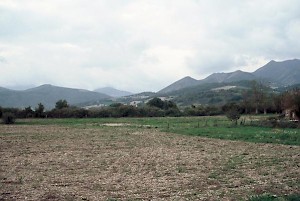Sentinum
Q683244Sentinum: town in ancient Umbria, best known for the Roman victory in the Third Samnite War in 295 BCE, which made the unification of Italy inevitable; modern Sassoferrato.

The remains of Sentinum have been identified about one kilometer east of modern Sassoferrato, close to a river that was also called Sentinum. The town became famous because of the battle that was fought in its territory in 295 BCE.
In that battle, the Romans were able to overcome a formidable coalition of Samnites and their Celtic allies in 295 BCE, while the other coalition members, the Etruscans and Umbrians, were kept in check elsewhere. According to Livy the decisive Roman charge was led by consul Publius Decius Mus, who dedicated himself to the gods (devotio).note When the enemies killed him, the angry gods punished them by destroying their armies.
The other consul, Quintus Fabius Rullianus, rounded off the battle successfully and brought back the dead body of his colleague. Although this victory was not the end of the Third Samnite War, it was now no longer in doubt that Rome would one day unify Italy. To thank the gods, the Romans erected a temple near Civitalba.

In 41 BCE, the town, which had in the conflict between Octavian and Mark Antony (the War of Perugia) sided with the latter, was destroyed by Quintus Salvidienus Rufus, a commander in the army of Octavian.note Sentinum was rebuilt, however, on the usual grid plan.
The town suffered from the invasion of Alaric's Visigothsnote and the war between the Byzantines and the Ostrogoths.note